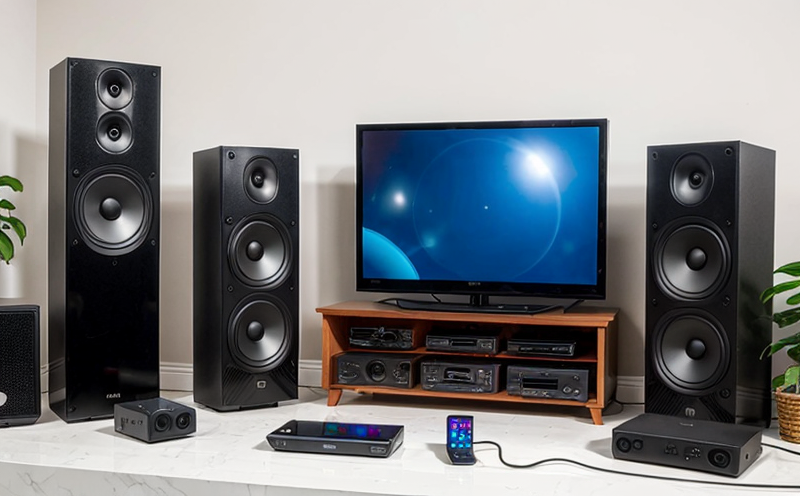Display Brightness and Contrast Performance Testing for Consumer TVs
In today’s competitive consumer electronics market, the quality of a television's display is paramount. Consumers not only expect vibrant colors but also precise contrast ratios to ensure that every scene is accurately represented on screen. Display brightness and contrast performance testing is crucial in guaranteeing these expectations are met. This test evaluates how bright and dark the screen can get, ensuring it meets industry standards and consumer demands.
The process involves simulating various lighting conditions, including ambient light levels common in living rooms, to assess how the TV performs under different scenarios. This helps manufacturers identify potential issues early on and adjust for optimal performance across a range of environments. Brightness is typically measured using photometers placed at specific distances from the screen, while contrast ratios are determined by calculating the difference between the brightest white and darkest black that can be displayed.
For accurate testing, it's essential to use calibrated equipment such as colorimeters and luminance meters. These tools help ensure consistent results across multiple units being tested. The goal is to maintain a balance between high brightness for viewing in well-lit rooms and sufficient contrast for dark scenes, which can vary depending on the type of content being displayed.
Understanding these parameters allows manufacturers to tailor their products more effectively based on regional preferences or specific use cases like gaming or movie watching. By conducting thorough testing during development stages, companies can avoid costly recalls post-launch and enhance brand reputation through superior product quality.
| Applied Standards | Relevant Code |
|---|---|
| Brightness Measurement | ASTM E2678-19 |
| Contrast Ratio Determination | IEC 62046:2013 |
These standards provide clear guidelines on how to conduct the tests accurately and consistently. Adhering strictly to them ensures that all displays meet minimum requirements set by regulatory bodies, thereby promoting fair competition within the industry.
- Ensures accurate representation of content regardless of viewing conditions.
- Promotes longer-lasting screens by minimizing strain on components due to excessive brightness or contrast.
- Facilitates better user experience with more realistic and enjoyable media consumption.
In conclusion, display brightness and contrast performance testing plays a vital role in enhancing the overall quality of consumer TVs. By incorporating this step into their development processes, manufacturers can deliver products that exceed customer expectations while maintaining compliance with relevant international standards.
Applied Standards
| Applied Standards | Relevant Code |
|---|---|
| Brightness Measurement | ASTM E2678-19 |
| Contrast Ratio Determination | IEC 62046:2013 |
The application of these standards ensures that the testing process is standardized and replicable, leading to reliable results. This consistency is crucial for both manufacturers and regulatory authorities who rely on accurate data when making decisions about product quality.
Benefits
- Enhanced visual clarity in various lighting conditions.
- Prolongs the lifespan of display components by preventing overuse.
- Better alignment with consumer preferences for high-quality entertainment experiences.
Implementing these tests early in the design phase allows companies to make informed decisions about feature enhancements or necessary adjustments, ultimately contributing to a superior final product.
Why Choose This Test
Selecting display brightness and contrast performance testing is not just a matter of compliance; it’s an investment in the future success of your brand. Here are several reasons why this particular test should be at the forefront of any quality assurance strategy:
- Market Differentiation: In competitive markets, small differences can make a big difference. Consistently meeting or exceeding industry standards sets you apart from competitors.
- Consumer Satisfaction: Happy customers are loyal customers. Ensuring that every TV delivered to the market performs as advertised fosters trust and loyalty among users.
- Cost Efficiency: Identifying issues early in the production process reduces costs associated with late-stage rework or recalls.
Above all, implementing rigorous testing protocols demonstrates a commitment to excellence that resonates positively with both internal teams and external stakeholders alike.





